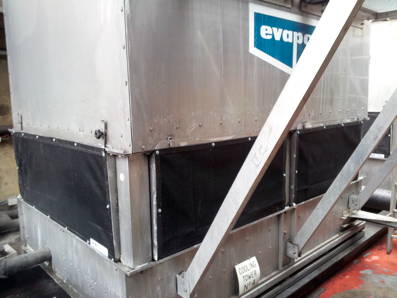 Cleanzine: your weekly cleaning and hygiene industry newsletter 17th July 2025 Issue no. 1171
Cleanzine: your weekly cleaning and hygiene industry newsletter 17th July 2025 Issue no. 1171
Your industry news - first
The original and best - for over 20 years!
We strongly recommend viewing Cleanzine full size in your web browser. Click our masthead above to visit our website version.
Taking steps to stop the spread of Legionnaire's Disease
 National Safety Month is observed in the US every June to emphasise the importance of safety in various environments. When it comes to water safety, of particular importance is preventing the spread of Legionnaire's disease - and that's not just in the US but the world over.
National Safety Month is observed in the US every June to emphasise the importance of safety in various environments. When it comes to water safety, of particular importance is preventing the spread of Legionnaire's disease - and that's not just in the US but the world over.
The Centers for Disease Control & Prevention reports a 900% increase in Legionnaire's disease cases between 2000 and 2018 in the US.
The disease is spread by inhaling Legionella bacteria. Just so we are clear, we cannot contract the disease by drinking water contaminated with the bacteria. Instead, what happens is that the Legionella bacteria develop in stagnant water. If it becomes aerosolised, it is released into the air allowing it to be inhaled.
The CDC explains some of the most common areas where Legionella develops are the following:
- Hot water tanks
- Complex plumbing systems
- Cooling towers
- Fountains and humidifiers
- Public washrooms
- Showerheads and faucets
- Hot tubs and whirlpools
According to Klaus Reichardt, CEO and founder of Waterless Co., Inc., marketers of no-water urinals. "The stagnant water, mixed with ambient temperatures, creates a highly conducive environment for the growth of Legionella."
As to how Legionnaires' disease spreads in public washrooms, the culprit is flushing.
A March 2021 study (Aerosol Generation in Public Restrooms, by Jesse H. Schreck et al., shared online by AIP Publishing) found that "both toilets and urinals when flushed, generate large quantities of droplets small enough to be inhaled. These droplets can pose a significant transmission risk if they contain infectious micro-organisms such as Legionella."
Furthermore, these droplets can remain in the air for 20 seconds or longer.
So, what can be done about this?
To help ensure health and safety in public washrooms, Klaus suggests the following:
* Increase ventilation in washrooms
* Conduct tests to determine if Legionella is present in a toilet or urinal bowl
* Select urinals that do not use water, eliminating flushing entirely
* Increase washroom cleaning frequencies
* Always wear a mask when cleaning washrooms
"One thing managers do not need to do is install toilet seat lids," he adds. "Studies now indicate droplets escape through the gaps under the lid, providing minimal protection when the lid is closed."
6th June 2024







